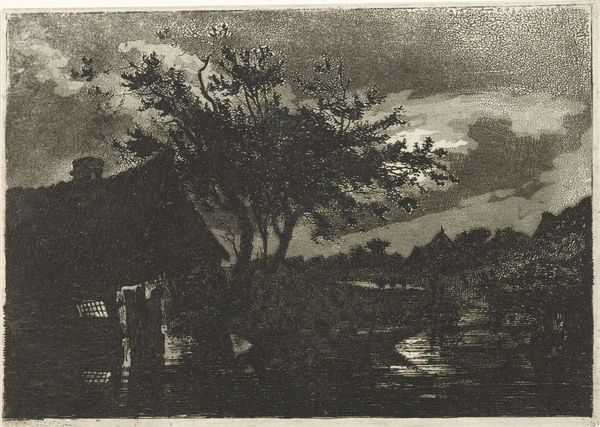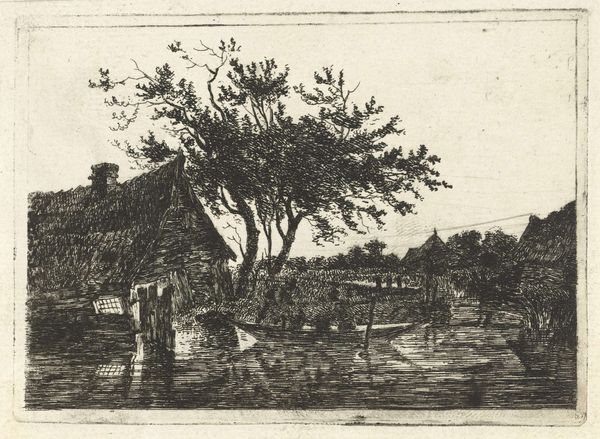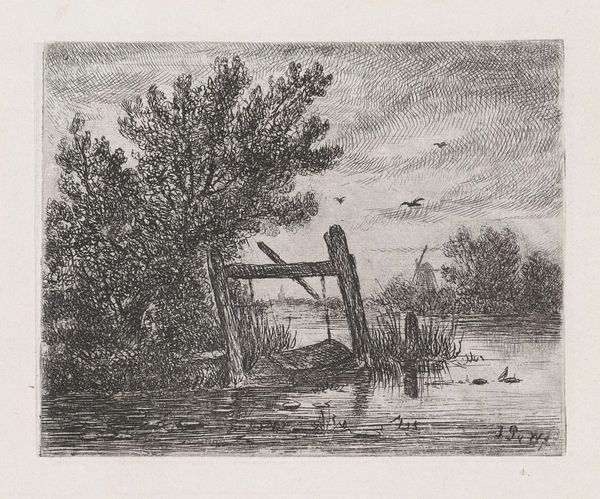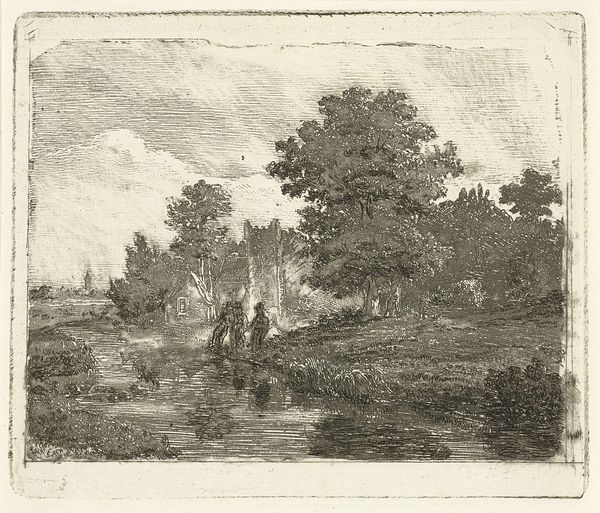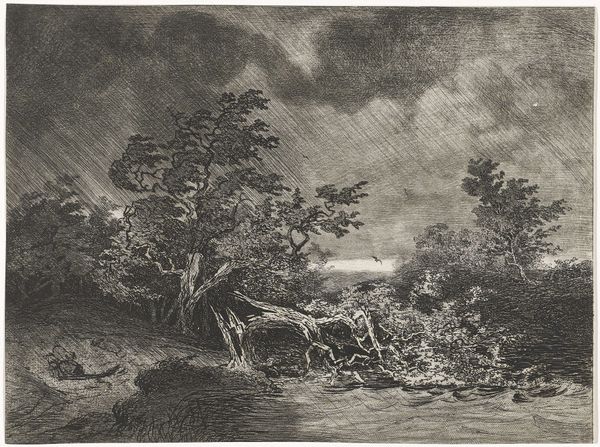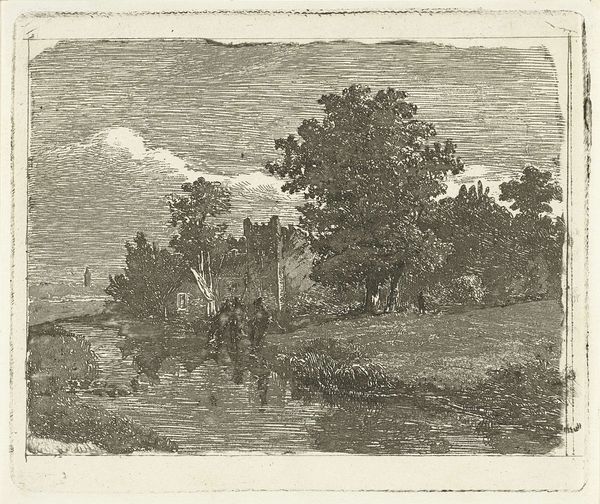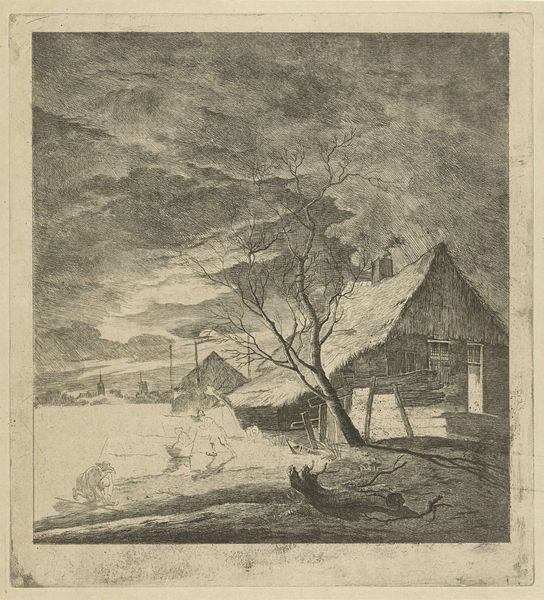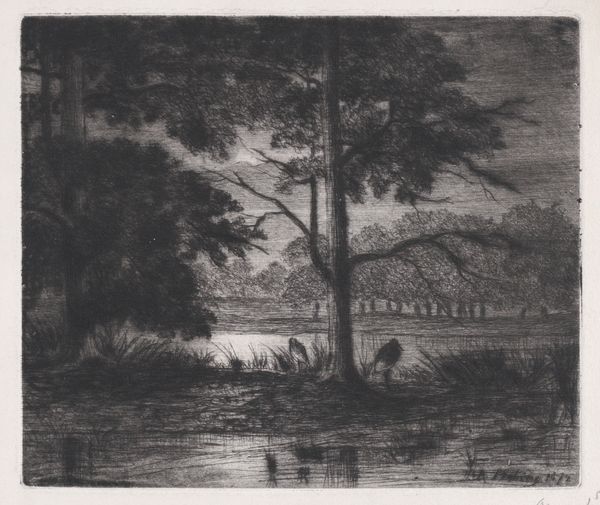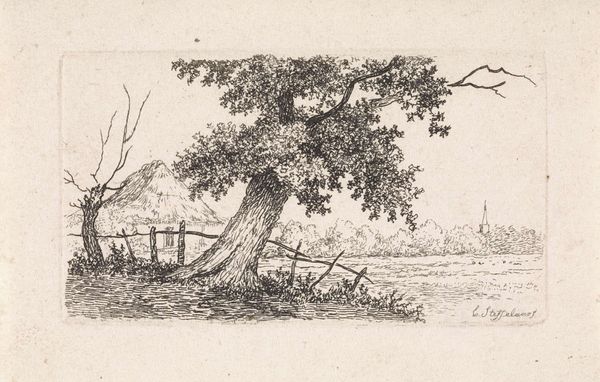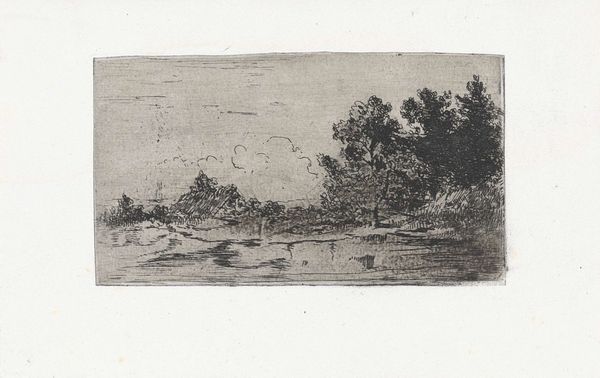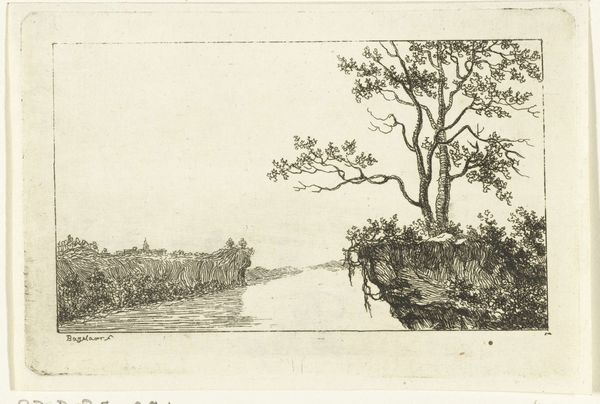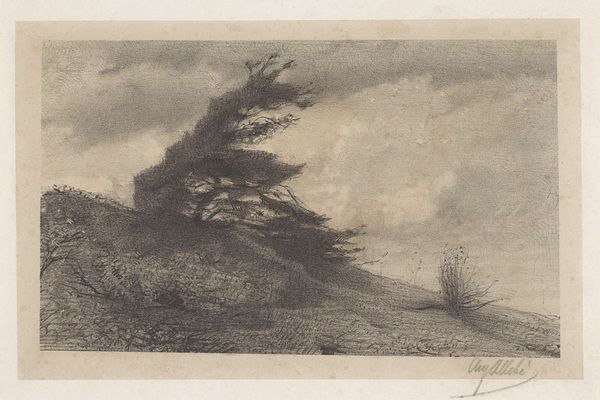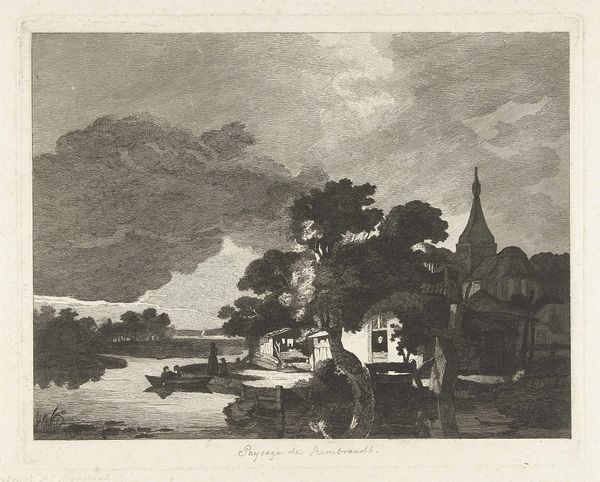
print, etching
# print
#
etching
#
landscape
#
romanticism
Dimensions: height 87 mm, width 123 mm
Copyright: Rijks Museum: Open Domain
François Joseph Pfeiffer created this tiny landscape with farmhouses using etching techniques, sometime in the early 19th century. Observe how the composition is dominated by a limited palette, primarily shades of grey and black, which creates a somber, almost melancholic mood. The artwork's structure hinges on the interplay between the rough textures of the thatched roofs and the smooth reflections on the water's surface. Pfeiffer uses line and shadow to delineate form, giving shape to the simple rural architecture and natural elements. Notice the way the artist uses the semiotic system of light and dark to structure the visual field, creating depth and defining spatial relationships. The stark contrasts not only highlight the physical details but also emphasize the quiet, unadorned life of the countryside. Consider how Pfeiffer’s formal choices, such as his use of chiaroscuro and minimal detail, may be seen as a deliberate challenge to the aesthetic conventions of the time, inviting viewers to find beauty in simplicity and the everyday.
Comments
No comments
Be the first to comment and join the conversation on the ultimate creative platform.
